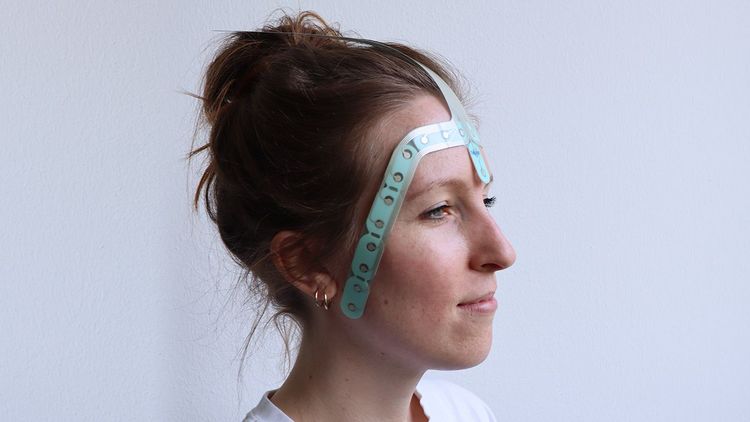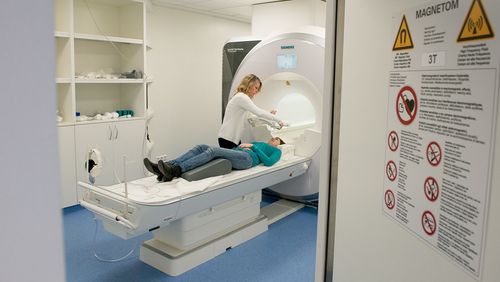Long-term measurements of brain waves are a cumbersome procedure for patients. Oldenburg brain researchers have now tested a new method – with promising results.
User-friendly, comfortable, and for the most part inconspicuous: these are the qualities that devices used to measure the electrical activity of the brain over extended periods should have. A team of Oldenburg researchers led by the two neuropsychologists Prof. Dr. Stefan Debener and Sarah Blum have now presented a procedure that fulfils these requirements in a study published in the Journal of Neuronal Engineering. In an experiment conducted with 20 volunteers, the researchers were able to demonstrate that their device, the fEEGrid (Flex-printed forehead EEG), provides signals of a quality comparable to those of a conventional EEG yet barely interferes with daily activities even when worn over a period of eight hours.
Long-term measurements of brain waves have so far been a burden for patients: an encephalography (EEG) involves attaching numerous electrodes to various locations on the scalp with glue and fixing them in place with a cap. Measuring procedures that last more than two hours – for example to diagnose epilepsy or investigate sleep disorders – can often only be performed in the laboratory. In many cases the patient experiences unpleasant itching, and some may experience a severe headache after a few hours. “A comfortable long-term EEG has not been available so far,” says Debener, who heads the Neuropsychology section at the Department of Psychology in the University of Oldenburg’s School of Medicine and Health Sciences. With the new, flexible device, such measurements could in future be made outside the laboratory – without unpleasant side effects.
Use on patients with severe brain damage
Debener’s team developed the fEEGrid with the long-term goal of helping severely brain-damaged patients to communicate with other persons. The procedure could above all help patients whose state of consciousness is unclear. “Brain activity tests have shown that some of these patients are more aware of their surroundings than was long suspected,” explains Debener. The team wants to use long-term measurements of brain waves to establish whether such patients react to certain external stimuli and whether there are periods during which they are in a wakeful state. “The prerequisite for this is long-term measurements that are not in any way unpleasant for the patients,” Debener stresses.
The Oldenburg neuroscientists developed the fEEGrid together with the Bavarian company Easycap. The measuring device consists of transparent, flexible carrier material onto which 22 small sensors and conducting paths are printed with silver ink. The device is not placed on the hair, but on the forehead and temples. An electrically conductive gel is used to connect the device to the skin and a small transmitter transmits the signals wirelessly to a smartphone or computer.
Practical long-term measurements
To find out how practical and convenient fEEGrid long-term measurements are, the team carried out tests with 20 healthy volunteers. The test persons wore the mobile EEG for eight hours in total as they went about their everyday activities. At the start and end of this period, the researchers measured the quality of the EEG signals while the test persons performed a series of standard tasks over a one-hour period. During the second test session the brain currents were concurrently recorded with conventional cap EEG data for comparison purposes.
The tests showed that the signal quality of the fEEGrid was good and did not deteriorate over the course of the day. The test persons also reported that the sensors were comfortable to wear and user-friendly. “We now have a comfortable procedure for EEG long-term measurements which hardly interferes with normal activities and does not impede patient’s care,” says Debener. He hopes that the fEEGrid can provide the basis for brain-computer interface applications that pave the way for basic communication with brain-damaged patients. The measuring device was designed in the BMBF (Federal Ministry of Education and Research) project NeuroCommTrainer, a collaborative project coordinated by Bielefeld University in which three universities, two companies and the v. Bodelschwinghschen Stiftungen Bethel are participating.



